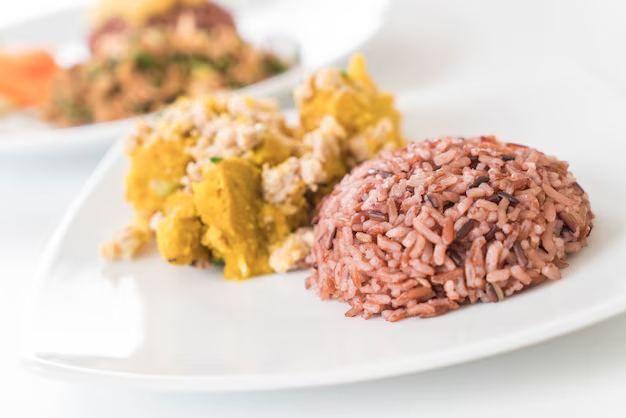How Long Can You Keep Jambalaya in the Refrigerator? Your Guide to Safe and Delicious Leftovers
Jambalaya, a flavorful dish with roots deep in Southern history, often finds itself as a centerpiece at gatherings or a satisfying weeknight meal. But when you've cooked up a batch larger than the occasion required, you might wonder, "How long can jambalaya remain fresh in the fridge?" This guide dives deep into the storage, shelf life, and reheating of jambalaya, ensuring that it stays safe to enjoy even days after it’s cooked.
Understanding Jambalaya and Its Ingredients
Before we delve into storage specifics, understanding what makes jambalaya is key to determining its shelf life. Jambalaya typically includes:
- Rice: Acts as the base for the dish.
- Proteins: Such as chicken, sausage, and seafood.
- Vegetables: Often a mix of onions, bell peppers, and celery.
- Spices and Broth: Essential for its robust flavor.
Each ingredient has its own storage guidelines, which influences the dish’s overall longevity.
The Role of Ingredients in Jambalaya's Shelf Life
- Rice: On its own, cooked rice can last in the refrigerator for up to four to six days.
- Proteins: Chicken and sausage generally remain safe for three to four days, while seafood has a shorter shelf life of only one to two days.
- Vegetables: Cooked vegetables can last about three to five days.
Shelf Life of Jambalaya
Combining these elements impacts the dish's overall shelf life. Jambalaya is generally safe to eat for up to three to four days when stored properly in the refrigerator, considering the mix of ingredients.
Proper Storage Techniques
Ensuring that jambalaya stays fresh requires careful handling and storage practices. Here's how to maximize its shelf life:
Cooling and Storing
- Cool It Quickly: Allow jambalaya to cool to room temperature before refrigeration. This prevents condensation, which can introduce unwanted moisture and promote bacterial growth.
- Divide Into Portions: Store it in smaller, airtight containers. This not only ensures quicker cooling but also makes reheating more convenient.
- Seal Well: Use containers with tight-fitting lids to prevent air exposure, which can lead to spoilage.
Refrigerator Placement
- Keep It Cold: Place the jambalaya in a cold spot, ideally in the back of the refrigerator where the temperature remains the most constant.
- Mark It: Label containers with the date to track how long the jambalaya has been stored, taking the guesswork out of food safety.
Signs of Spoilage to Watch For
Even when stored correctly, jambalaya can spoil. Here are some warning signs:
- Off Smell: Any sour or rancid aroma indicates that it’s best to discard the dish.
- Mold: Visible mold growth is a clear sign the food has gone bad.
- Texture Changes: If the rice becomes excessively dry or the proteins look discolored, it’s time to toss it.
Reheating Jambalaya Safely
Maintaining food safety doesn’t stop at storage—reheating is equally important.
Methods for Reheating
- Stovetop: Add a splash of broth or water to a pan, and heat the jambalaya over medium heat, stirring occasionally until it’s heated evenly.
- Microwave: Place a portion in a microwave-safe dish, cover partially to avoid moisture loss, and heat in short intervals, stirring between to ensure even warmth.
Reheating Tips
- Heat Thoroughly: Ensure that jambalaya is heated to an internal temperature of at least 165°F (74°C) to kill any potential bacteria.
- Serve Immediately: Consume as soon as it reaches the appropriate temperature and avoid reheating the same portion multiple times.
Extending Shelf Life Through Freezing
If you're looking to keep your jambalaya longer than a few days, freezing is an excellent option.
Freezing Guidelines
- Portion Wisely: Divide into meal-sized portions to make thawing and reheating easier.
- Air-Tight Method: Use freezer bags or airtight containers. Remove as much air as possible to prevent freezer burn.
- Freeze Promptly: For best quality, freeze jambalaya within two hours of cooking.
Defrosting and Reheating Frozen Jambalaya
- Thaw Safely: Ideally, transfer it to the fridge the night before you plan to eat it. For quicker thawing, use the microwave's defrost setting.
- Reheat Properly: Like refrigerated jambalaya, ensure it reaches an internal temperature of 165°F (74°C).
Practical Tips for Enjoying Leftover Jambalaya
To keep mealtime interesting even with leftovers, try these ideas:
- Transform the Dish: Make jambalaya-stuffed bell peppers or create a jambalaya skillet by adding fried eggs and cheese on top.
- Pair Creatively: Serve it alongside a crisp green salad or with buttered cornbread for a varied texture experience.
📝 Jambalaya Storage and Safety Cheat Sheet
- 👨🍳 Cool quickly and store in airtight containers.
- 🌡️ Aim for an internal temperature of 165°F when reheating.
- 📅 Consume refrigerated jambalaya within 3-4 days.
- ❄️ Freeze portions for longer storage, ideally within 2 hours of cooking.
- 👃 Check for off smells or textures before eating.
Conclusion: Enjoy Jambalaya with Confidence
With its comforting flavors and robust ingredients, jambalaya continues to be a favorite for many. Understanding its shelf life and how to store it safely ensures you can enjoy this dish without compromising on taste or safety. Use these guidelines to maximize the life of your jambalaya, keeping every bite as delightful as the first. Whether reheating a single portion or serving frozen leftovers, you'll savor each bite knowing it's been prepared with care and attention.
